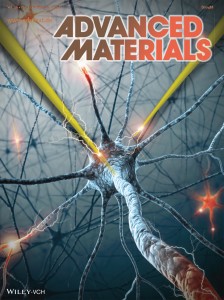Penn State paper examines the state of the art in neural interface materials
Though engineers and doctors have been hard at work developing breakthroughs such as artificial limbs and therapies for spinal cord injuries, one of the greatest challenges is designing the neural interfaces themselves — the bridge between the body’s nervous system and the medical device.

A paper reviewing the state of the art in biomaterials for neural interfaces is featured on the cover of the journal Advanced Materials.
As part of this effort, a team of Penn State engineers underwent an exhaustive review of the current state of the art in the organic and inorganic biomaterials utilized in neural interfaces.
The team’s paper looks at current microelectrode technologies, advancements in electroactive nanomaterials and the technical and scientific challenges in using nanomaterials to create long-lasting, functional neural interfaces.
The authors include Pouria Fattahi, graduate student in chemical engineering; Guang Yang, graduate student in bioengineering; Gloria Kim, graduate student in bioengineering; and Mohammad Reza Abidian, assistant professor of biomedical engineering, materials science and chemistry.
The result, “A Review of Organic and Inorganic Biomaterials for Neural Interfaces,” is the cover story in the latest issue of Advanced Materials, published on March 26.
The Penn State team’s paper can be found online at: http://onlinelibrary.wiley.com/doi/10.1002/adma.201304496/abstract.
Read More
Follow Us!